Theses & Summer Research
2024 Summer Students
Charles OttmanExperimental exploration of the dynamics of a time-delayed relay system. |
Tarn McQuistanDelord-Mockett Fund:Delayed relay control of an inverted rotary pendulum. |
2024 Spring Semester Moore Research
Azra Hrnjica & Maggie AuerbachMoore Foundation Research Fellowship: Caustics - Why there are two images. |
2023/2024 Thesis Students
Brent EllisThesis: Investigating Uniform Point Distributions on the Sphere with Constrained Dynamics This thesis presents a method for generating approximately uniform distributions on the sphere by reframing the problem as one of minimizing the energies of N equal charges. Specifically, beginning from a random initial configuration, we dynamically model the charges’ motion along the surface of the sphere as they rearrange themselves by their mutual electric interactions. |
 |
Tarn McQuistanThesis: Delayed Relay Feedback Control for an Inverted Pendulum This thesis attempts an implementation of a time delayed relay feedback controller on a rotary inverted pendulum. The structure of the controller is based on the theoretical work done in J. Sieber, “Dynamics of delayed relay systems,” Nonlinearity 19, 2489 (2006). The experimental implementation failed to produce the expected convergence to small oscillations. |
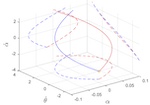 |
Ella PascoeThesis: An Experimental Investigation of Internal Solitary Waves This thesis offers an investigation into fluid dynamics by studying internal solitary waves. We built a flume-tank and generate internal solitary waves in a two-fluid system. The experimental speeds of the waves are consistent with the theoretical predictions. |
 |
2023 Summer Students
Brent EllisMeasuring the bifurcation diagram of a driven time-delay relay system. |
Tarn McQuistanInverted Pendulum Control Through LQR |
Sunny WangAmplitude death in coupled electronic circuits. |
2022/2023 Thesis Students
Hannah KuderThesis: The Beesis Honeybee nectar foraging is a complicated, decentralized process reliant on the social exchange of information between individual honeybees with limited information. In this thesis, we first simplify an established model of nonlinear differential equations, prove that a global attractor exists for the one nectar site case, and discuss predictions of the long and short term behavior of the simplified model for the two site case. |
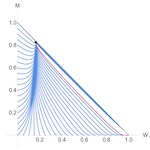 |
Ryan TangThesis: Experimental exploration of water waves Utilizing a water tank originally designed by Yulia Kornikova and Jay Ewing in 2021, this thesis investigates the tank’s ability to generate pseudo 1-D waves. Our results suggest that the waves generated cannot be classified as shallow water waves, nor can they be considered fully developed solitary waves. |
 |
2020/2021 Thesis Students
Théo Lavier (U. of Edingburgh)Thesis: A First Look at Rate Induced Tipping The goal of this thesis is to develop an understanding of what rate induced tipping is and explore some of the recent developments in the analytic tools used. This exploration is guided by the development of a set of examples demonstrating rate induced tipping in a simple 1D system and a mechanical system. |
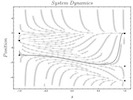 |
Quinn MorganThesis: Exploring Bistability in a Driven Time-delay System with an Electronic Circuit This thesis investigates bistabilities within a driven time-delay system using an electronic circuit. This thesis describes the construction of the electronic circuit and demonstrates that the circuit generates dynamics in good agreement with previously developed theory. |
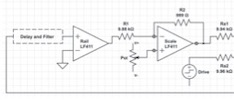 |
Zehui Zhao (Emory)Thesis: Converse Symmetry Breaking in Two Models A previous study by Nishikawa and Motter found a coupled-oscillator model that demonstrates converse symmetry breaking, a phenomenon in which the stable states are symmetric only when the system itself is not. This thesis will show analytically that a strong version of this claim is true but the proof is limited to small networks. A modified model is then introduced that shows (weak) converse symmetry breaking for any number of oscillators. |
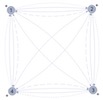 |
2020 Summer Student
Jesse CaoReed College Science Research Fellowship: Amplitude death of coupled optoelectronic oscillators. |
2019/2020 Thesis Students
Josh Dey (Software Developer at AI company)Thesis: Reservoir Computing: Neural Networks and Observing Nonlinear Dynamical Systems This project deals with reservoir computing and an observation task: inferring the state of a chaotic system. We seek to learn more about the internal dynamics of the reservoir computer by analyzing our observation task using three different activation functions; purely linear, purely nonlinear, and a mix of the two. |
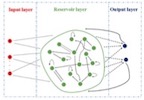 |
Zhongtian (Cosmos) Dong (U. of Kansas)Thesis: Predicting spatio-temporal chaos with reservoir computing In this thesis, a basic implementation of reservoir computing is studied. First, the capability to predict the dynamics of relatively simple chaotic systems is tested and a new performance metric is defined. Next, the performance and limitations of reservoir computing is studied when applied to spatio-temporal chaotic systems. |
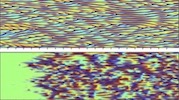 |
Maham Zia (researcher at U. of Minnesota)Thesis: Investigating the role of Split discs in craniofacial development using Traction Force Microscopy For this thesis, I used RNA interference (RNAi) and Traction force microscopy (TFM) to study and quantify cell migration in Drosophila cells with normal and reduced levels of Split discs (Spds)-homolog of SPECC1L in humans which is known to be implicated in craniofacial deformities. |
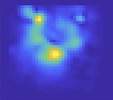 |
2019 Summer Students
2018/2019 Thesis Students
Sean C. AllenThesis: Reservoir Computing: Observing the Baker’s Map A link of reservoir computing to generalized synchronization is considered, leading to the idea that the map between the input state space and the reservoir state space should be smooth. The validity of the explanation is then explored numerically via observation tasks on the canonical dissipative Baker’s map. |
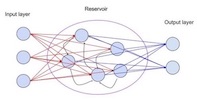 |
Nikki JohnstonThesis: Cells on Gels This thesis is about traction force microscopy, a method in which a cell translocating on the surface of a gel causes the movement of beads within the gel and one calculates the forces the cell exerts on the surface by imaging the bead movements. This thesis offers background on elastic mechanics and traction force microscopy and a guide to this laboratory method at Reed. |
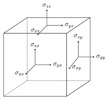 |
Oona Sullivan-Marcus (OMSI)Thesis: Methods for Producing Computer Generated Holograms Using a Spatial Light Modulator Holography is a technique for creating a 3-dimensional image that involves recording an interference pattern between a reference beam and the field of light scattered off an object, then illuminating the recorded interference pattern with the reference beam. In this thesis, the experimental generation of a digital hologram using a spatial light modulator is described. |
 |
2018 Summer Students
2017/2018 Thesis Students
Matthew Chau (CompSci at Northeastern)Thesis: Analyzing 3-Point Symmetric Contacts of Photoelastic Disks A method is developed for determining the magnitude of three point-contact forces that symmetrically compress a photoelastic disk. |
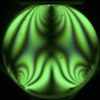 |
Giovanni Corti (Earth Science at Simon Fraser)Thesis: Avalanches in Granular Material In this thesis the physics of granular avalanches are investigated. A rough inclined plane is constructed and the angles of inclination at which a layer of known uniform thickness is either stable, meta-stable or unstable are measured. The location of stability region boundaries are compared to theoretical predictions and we find a good match to the data. |
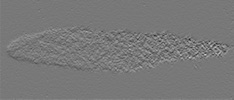 |
Noah Shofer (Cambridge, Sperling)Thesis: Reservoir Computing: Memory, Nonlinearity, and Spatial Observers This thesis covers the background and implementation of reservoir computers. We show that these reservoir computers can act as observers for the Lorenz and Rössler chaotic systems, i.e. they are able to predict unobserved dynamical variables of these systems, and are able to learn the Lorenz or Rössler attractors. Furthermore, coupled map lattice dynamics were generated experimentally and in silico. We found an optimized parameter set that enabled the reservoir computer to predict the dynamics of the unobserved nodes of a 1D lattice when given the dynamics of a few nodes within the lattice. |
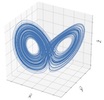 |
2017 Summer Students
Yunjia BaoReed College Science Research Fellowship: Dynamics of dual delay oscillators with narrowband feedback. |
Edgar Perez (NIST, U Maryland)A high speed all electronic programmable time delay. |
2016/2017 Thesis Students
Yuka Esashi (UC Boulder/JILA)Thesis: Generation and Characterization of Nondiffracting Beams The theory and application of nondiffracting beams beams are reviewed, and the generation of these beams using a setup involving a spatial light modulator is described. Several interesting properties of these beams, including propagation-invariance, self-healing, and angular momentum were measured and found to be in good agreement with theory. |
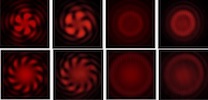 |
Robby Gottesman (Data Scientist at Nielsen)Thesis: Lighting the Way: Computations of Stable Forms of Optical Lift An optical ray tracing module was developed in Mathematica to characterize the efficiency of optical wing designs. This procedure calculates the optical forces and resulting torque on a homogenous, transparent body with constant index of refraction and finds whether the body experiences stable angles of attack and lift forces. |
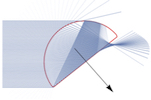 |
Lara Kincheloe (SFSU)Thesis: Maxwell's Dæmon in an Information Engine This thesis is an exploration of the implications of associating thermodynamic entropy with information, and the ways in which chaos dynamics inform the association. The Szilárd engine is identified as a system of particular interest and its thermodynamic, informational, and chaotic properties are assessed and compared with two physical systems exhibiting similar dynamical behavior. /td> |
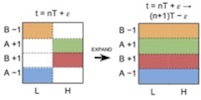 |
2016 Summer Students
2015/2016 Thesis Students
Ace Furman (UT Austin)Thesis: Electromagnetically Induced Transparency: The Zeeman Method Electromagnetically induced transparency (EIT) — a quantum phenomenon wherein a material undergoes optical and dispersive modifications under the influence of resonant electromagnetic fields — was observed in warm rubidium vapor using the Zeeman method. |
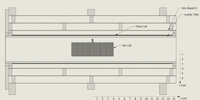 |
Mateo Ochoa Coloma (Software Developer)Thesis: Origins of Chaos in Nonlinear Oscillatory Hamiltonian Systems An exposition of chaos in perturbed, oscillatory Hamiltonian systems is provided, including the fundamentals of the Hamiltonian formalism, the construction of Hamiltonian maps, and the use of the KAM theorem and the Poincare-Birkhoff theorem to identify the origin of chaos in the vicinity of the separatrix for arbitrarily small perturbation strengths. |
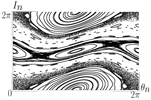 |
Colleen Werkheiser (Harvard)Thesis: The Dynamics of a Nonlinear Time-Delayed Electronic System We study the dynamics of a nonlinear time-delayed electronic oscillator consisting of a comparator, time delay, lowpass filter, and amplifier. Positive feedback resulted in a signal that decayed in finite time, while negative feedback resulted in slowly oscillating periodic solutions. |
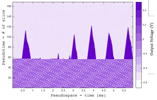 |
2013/2014 Thesis Students
Anya DemkoThesis: Dynamic Stabilization of an Invert Pendulum Counter to intuition, the inverted position of a pendulum with a vertically oscillating pivot point can be stable. A pendulum is constructed using a mechanical wave driver to oscillate the pendulum's pivot point. Experimentally determined regions of stability agree well with theoretically predicted boundary lines. |
 |
Rachel PincusThesis: Photoacoustic spectroscopy: a method for investigating weak molecular absorption Photoacoustic spectroscopy is ideal for the study of samples exhibiting low absorption of light. This thesis aims to explain the basic theory and construction of a photoacoustic spectrometer. To validate its construction, studies were conducted on laboratory air and nitrous oxide. |
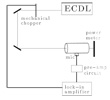 |
Tobias Koppel (SAP)Thesis: Demonstrating a Negative index of Refraction A metamaterial intended to have a negative index of refraction is fabricated using aluminum plates and split ring resonators printed onto circuit boards. The angle of refraction is used to characterize the index of refraction of the material. |
 |
2013 Summer Students
Yudan (Dan) Guo (Stanford)Chaos in hybrid dynamical systems. |
Lindsay Sonderhouse (UC Boulder)Phase dynamics of two mutually coupled optoelectronic systems with unequal delays. |
Andrew Warren (Math, Philosophy at Carnegie Mellon)Reed College Science Research Fellowship: Phase and amplitude dynamics of delay-coupled oscillators. |
2012/2013 Thesis Students
Xueping Long (UCLA)Thesis: Implementation of a Chaotic Electromechanical Oscillator Described by a Hybrid Differential Equation This thesis describes an electromechanical oscillator whose governing equation of motion is an exactly solvable chaotic differential equation that takes the form of a force driven harmonic oscillator with negative damping coeffcient and a discrete switch condition to control and set two different equilibrium positions. Strong agreement is found between experiment and analytic solutions. |
 |
Jon Kindem (Applied Physics at Caltech)Thesis: Optical Precursors Starting from Maxwell's equation, the weakly dispersive, narrow resonance approximation is used to derive expressions for the time evolution of the precursor field. Optical precursors are experimentally observed in cold rubidium gas in a magneto-optical trap and a stacking effect between multiple off-resonance precursors is achieved. |
 |
Lukas Kuczynski (Portland: Lightcraft Technology)Thesis: Extending Piecewise-Linear Chaos to Ultra-High-Frequencies Using Time-Delayed Feedback Extension of exactly solvable piecewise-linear chaos to the regime of ultra-high-frequencies. In doing so, the issues surrounding the decreased timescale of dynamics are mitigated through the use of time-delayed feedback and control loops in a fully electronic circuit. |
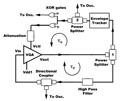 |
Lindsay Sonderhouse (NIST; UC Boulder)Thesis: Phase and Amplitude Instability in an Optoelectronic Oscillator with Delayed Self-Feedback The dynamics of a single optoelectronic oscillator perturbed by time-delayed self-feedback are explored experimentally and investigated theoretically through the Kuramoto (phase only) model and the Stuart-Landau (phase and amplitude) equation. The experimentally observed behavior can be explained by the stability conditions derived using the Stuart-Landau model but is inconsistent with the predictions of the Kuramoto model. |
 |
2012 Summer Students
Xueping LongExactly Solvable Chaos |
Cris PandaDynamics of coupled optoelectronic systems with unequal delays |
2011/2012 Thesis Students
Gray Davidson (Data Scientist)Thesis: The Damped Driven Pendulum: Bifurcation Analysis of Experimental Data When a pendulum is acted on both by a velocity dependent damping force, and a periodic driving force, it can display both ordered and chaotic behaviors, for certain ranges of parameters. Chaotic dynamics and the damped driven pendulum are examined via a professionally manufactured instrument from Daedalon. |
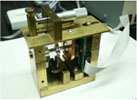 |
Wes Erickson (UOregon)Thesis: Electromagnetically Induced Transparency Electromagnetically induced transparency (EIT) is a phenomenon that dramatically modifies the optical properties of a medium by creating a transparency window at a normally highly absorbing atomic resonance, and by greatly enhancing the medium's dispersion. The electric susceptibility describing these properties is derived and an experimental setup to observe the effect is detailed, including results demonstrating EIT in Rubidium 87. |
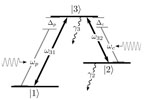 |
Cris Panda (Harvard)Thesis: Phase Dynamics and Synchronization of Delay-Coupled Optoelectronic Oscillators We study experimentally, numerically, and analytically the phase dynamics and synchronization of two nonlinear optoelectronic oscillators with weak time-delayed mutual coupling and strong time-delayed self-feedback. Three distinct phase dynamic behaviors are observed as a function of the ratio of coupling to feedback delay: in-phase locking, anti-phase locking, and multi-timescale oscillations. |
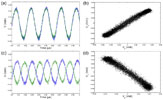 |
Jeremy Lawrence (Portland: Celly)Thesis: Analyzing photoelastic disks We develop methods for determining the forces acting on a single diametrically compressed photoelastic disk by analyzing the fringe pattern the disk exhibits when viewed in a crossed circular polariscope illuminated with monochromatic light. |
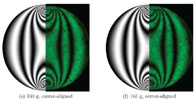 |
2011 Summer Students
Cris PandaChaos and Synchrony of optoelectronic delay system. |
2009-2010
Lauren Shareshian, M.A. in Mathematics: Research AssistantNonlinear dynamics of coupled delay systems. |
2010 Summer Students
Cris PandaChaos and Synchrony in a system of three optoelectronic delay system. Conference Presentation: Isochronous chaos synchronization of delay-coupled optoelectronic oscillators, 12th Annual Meeting of the Northwest Section of APS, Walla Walla, WA, Oct 1-2, 2010 (poster). Bulletin of the APS, Vol. 55, Num. 6 |
Alison Saunders (SLAC National Accelerator Laboratory; UC Berkeley)Reed College Science Research Fellowship: The dynamics of the Malkus water wheel. Conference Presentation: The dynamics of the Malkus water wheel, 12th Annual Meeting of the Northwest Section of APS, Walla Walla, WA, Oct 1-2, 2010 (poster). Bulletin of the APS, Vol. 55, Num. 6 |
2009/2010 Thesis Students
Greg Hoth (Materials Science Inst. at UOregon; NIST; UC Boulder)Thesis: The Dynamics of Delay Coupled Optoelectronic Devices The oscillation onset for a pair of cross-coupled optoelectronic oscillators is investigated experimentally, analytically, and numerically. It is shown that these systems undergo a sharp onset of oscillations at a critical value of the coupling strength and that there is a scaling law that governs the relationship between the coupling strength and the amplitude of oscillations. Conference Presentation: The scaling behavior of oscillations arising in delay-coupled optoelectronic devices, APS March Meeting 2010, Portland, OR, May 15-19, 2010 (talk). Bulletin of the American Physical Society, Vol. 55, Num. 2 |
 |
Sam Spencer (Optics Institute at URochester)Thesis: Active Modelocking an Open-Cavity Helium-Neon Laser We discuss the physical mechanisms that lead to modelocking as well as the nonlinear phenomenon of injection locking and the role it plays in making modelocking an experimental reality. We experimentally demonstrate modelocking using a Helium-Neon laser tube with external cavity mirrors and an acoustooptic modulator. |
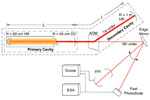 |
2009 Summer Students
Matthew Jemielita (UOregon)Bifurcations and modeling of a pulsed opto-electronic delay system. |
Greg HothReed College Science Research Fellowship: Dynamics of cross-coupled opto-electronic delay systems. |
Adarsh Pyarelal (UArizona)Chaotic dynamics and bifurcations of the Malkus Water Wheel. |
2008/2009 Other Advisees
Kevin J. LynaghReed College Melon Foundation Opportunity Grant: Nanopore Sequencing |
2008/2009 Thesis Students
Rachel Fordyce (Plant Biology at UC Davis)Thesis: Chaotic Waterwheel Experimental implementation of the chaotic Malkus waterwheel, a mechanical device whose dynamics are modeled by the famous Lorenz equations. The observed dynamical behavior in both the chaotic and periodic operating regime is analyzed qualitatively using phase space plots and spectra. Paper: L. Illing, R. F. Fordyce, A. M. Saunders, and R. Ormond, Experiments with a Malkus-Lorenz water wheel: Chaos and Synchronization, Am. J. Phys., vol. 80 (3), 192 (2012). |
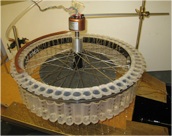 |
Cody MyersThesis: Monochromatic Plane Waves in a Corrugated Tube System Experimental and theoretical study of acoustic transmission properties of a corrugated tube. As with many periodic systems, there are band gaps for the acoustic wave propagation through the corrugated tube, i.e. large ranges of incident sound frequency over which there is virtually no sound transmission. |
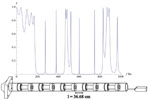 |
2008 Summer Students
Matthew JemielitaReed College Science Research Fellowship: Bifurcations of a pulsed opto-electronic delay system |
Christopher MayChaos synchronization of mutually coupled opto-electronic devices. |
Seth TerashimaChaos and bifurcations in the electronic "Rulkov" circuit. |
2007/2008 Thesis Students
Drew Atwater (Environmental Sciences at UC Riverside)Thesis: A Brief Study of Thermoacoustic Cooling Experimental and theoretical study of a thermoacoustic engine, a device where sound from a speaker is used to establish and maintain a temperature difference across a stack inside a pipe. |
|
Christopher May (Portland: Lucky Sort, Puppet Labs)Thesis: Feedback, Synchronization, and Communication in Chaotic Time-Delay Opto-Electronic Feedback Circuits Feeding back an amplified output signal of a nonlinear device to itself can result in self-sustained oscillations. Here, the nonlinearity is an integrated opto-electronic mach-zehnder modulator and the oscillations can be periodic or chaotic, depending on the feedback strength. Synchronized chaotic oscillations are achieved by coupling two such devices, which then are utilized for communication. Conference Presentation: Chaos Synchronization and Communication using Optoelecronic Time-Delay Feedback Circuits, 10th Annual Meeting of the Northwest Section of APS, Portland, OR, May 16-17, 2008 (poster). |
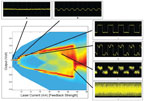 |
Erin McCowen (Forestry at Colorado State University)Thesis: Bioconvection: The Effect of Density on Wavelength Bioconvection of Bacillus subtilis, a phenomenon where the interplay of active upward swimming of the bacteria, gravity, and fluid dynamics result in spontaneous pattern formation. |
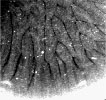 |